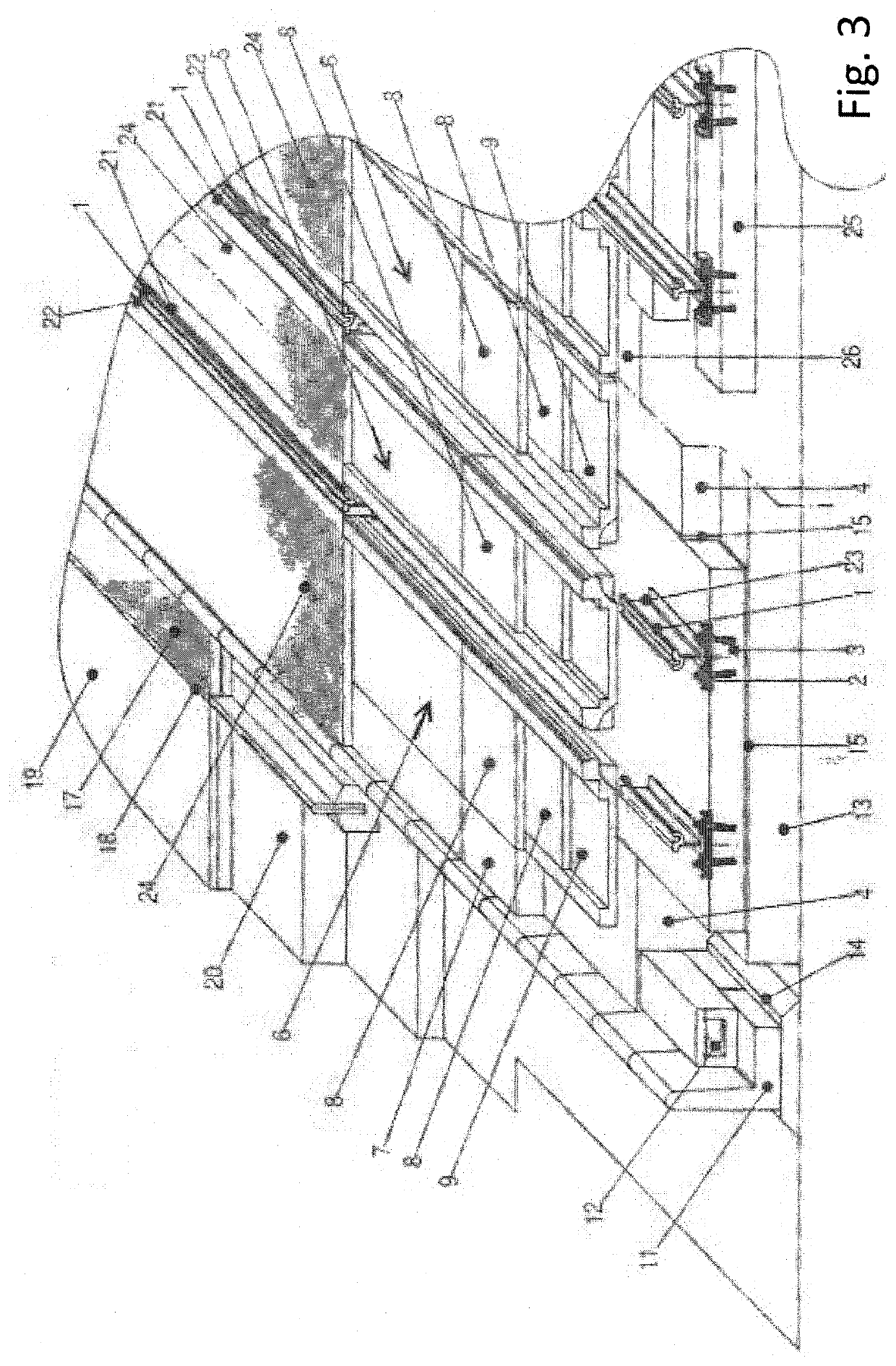Railway or tramway track
a technology for tramways and rails, applied in railway tracks, temporary pavings, railway tracks, etc., can solve the problems of high noise and vibration emissions of solid railways into the surrounding area, hardly used on transverse railway sleepers and gravel ballast, etc., to reduce the rate of flow and outflow
- Summary
- Abstract
- Description
- Claims
- Application Information
AI Technical Summary
Benefits of technology
Problems solved by technology
Method used
Image
Examples
Embodiment Construction
[0034]Reference will now be made to embodiments of the invention, one or more examples of which are shown in the drawings. Each embodiment is provided by way of explanation of the invention, and not as a limitation of the invention. For example features illustrated or described as part of one embodiment can be combined with another embodiment to yield still another embodiment. It is intended that the present invention include these and other modifications and variations to the embodiments described herein.
[0035]Several embodiments will be used to explain the invention, illustrated in FIGS. 1 to 5, whereby the principle of the invention is based on the fact that at least one non-humic layer is inserted in the track, whereby this layer absorbs water, reduces its rate of flow and outflow, and at the same time allows its evaporation. By the non-humic humic layer, we understand a layer which does not contain soil, or, more specifically, soil for growing plants.
[0036]FIG. 1 shows an exemp...
PUM
 Login to View More
Login to View More Abstract
Description
Claims
Application Information
 Login to View More
Login to View More - R&D
- Intellectual Property
- Life Sciences
- Materials
- Tech Scout
- Unparalleled Data Quality
- Higher Quality Content
- 60% Fewer Hallucinations
Browse by: Latest US Patents, China's latest patents, Technical Efficacy Thesaurus, Application Domain, Technology Topic, Popular Technical Reports.
© 2025 PatSnap. All rights reserved.Legal|Privacy policy|Modern Slavery Act Transparency Statement|Sitemap|About US| Contact US: help@patsnap.com



